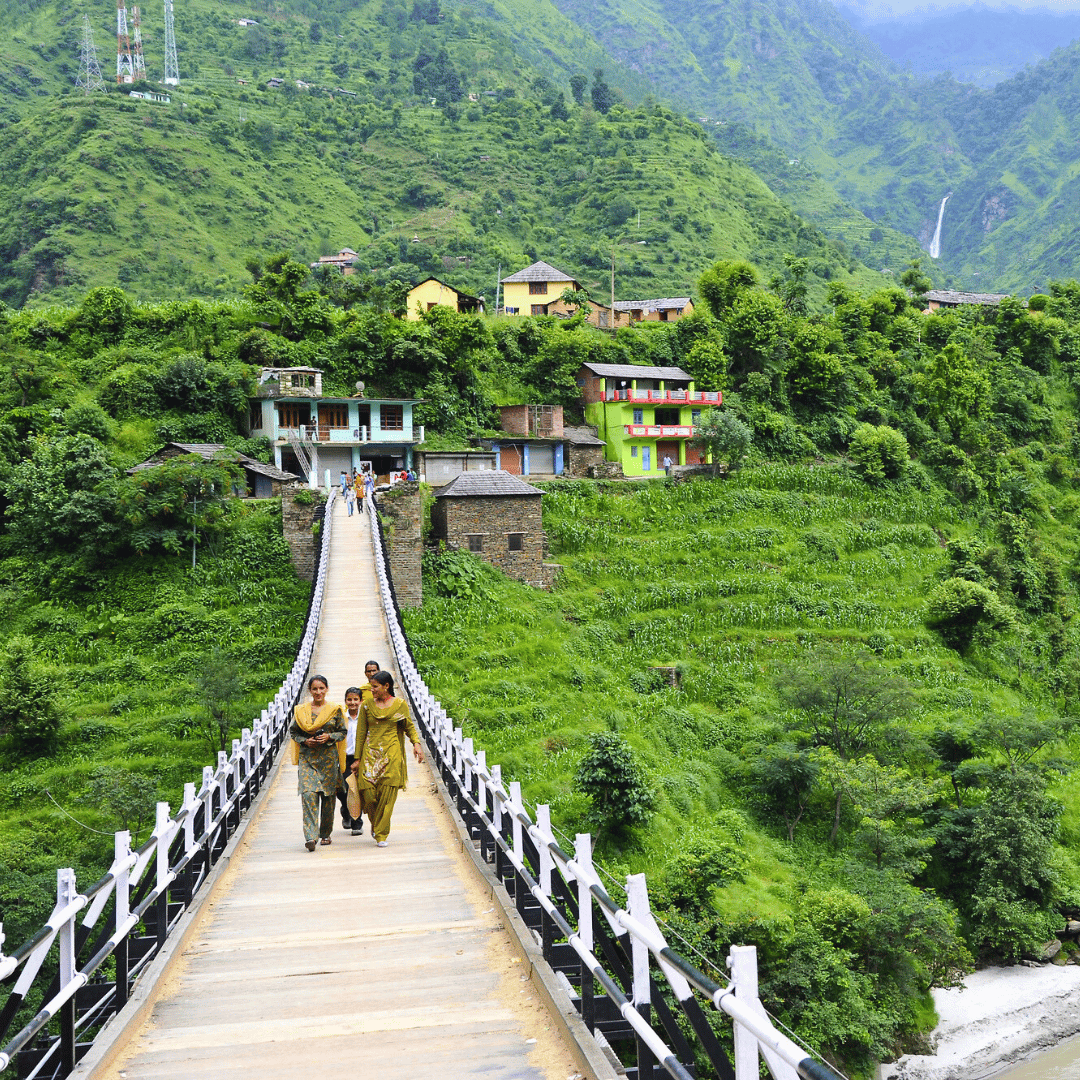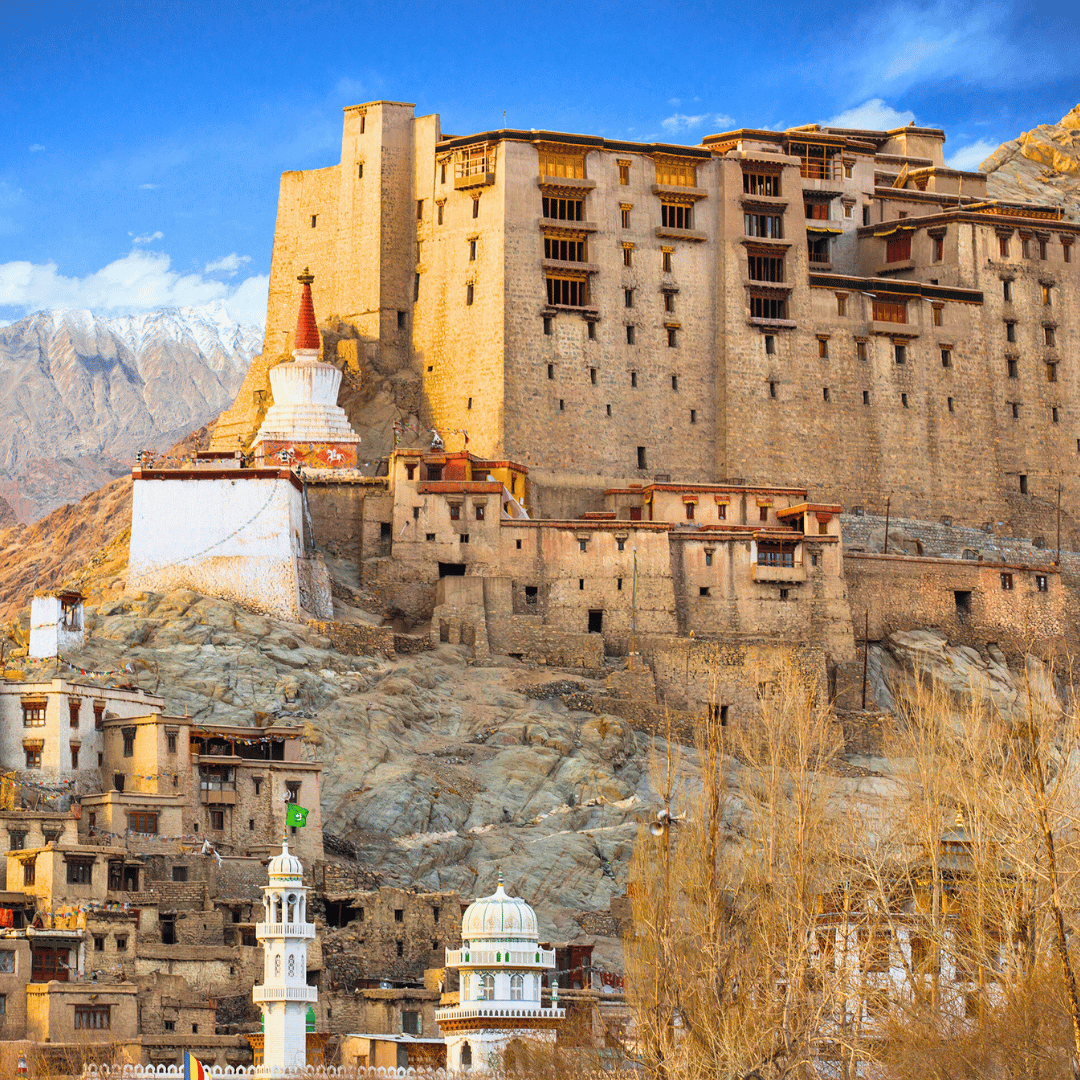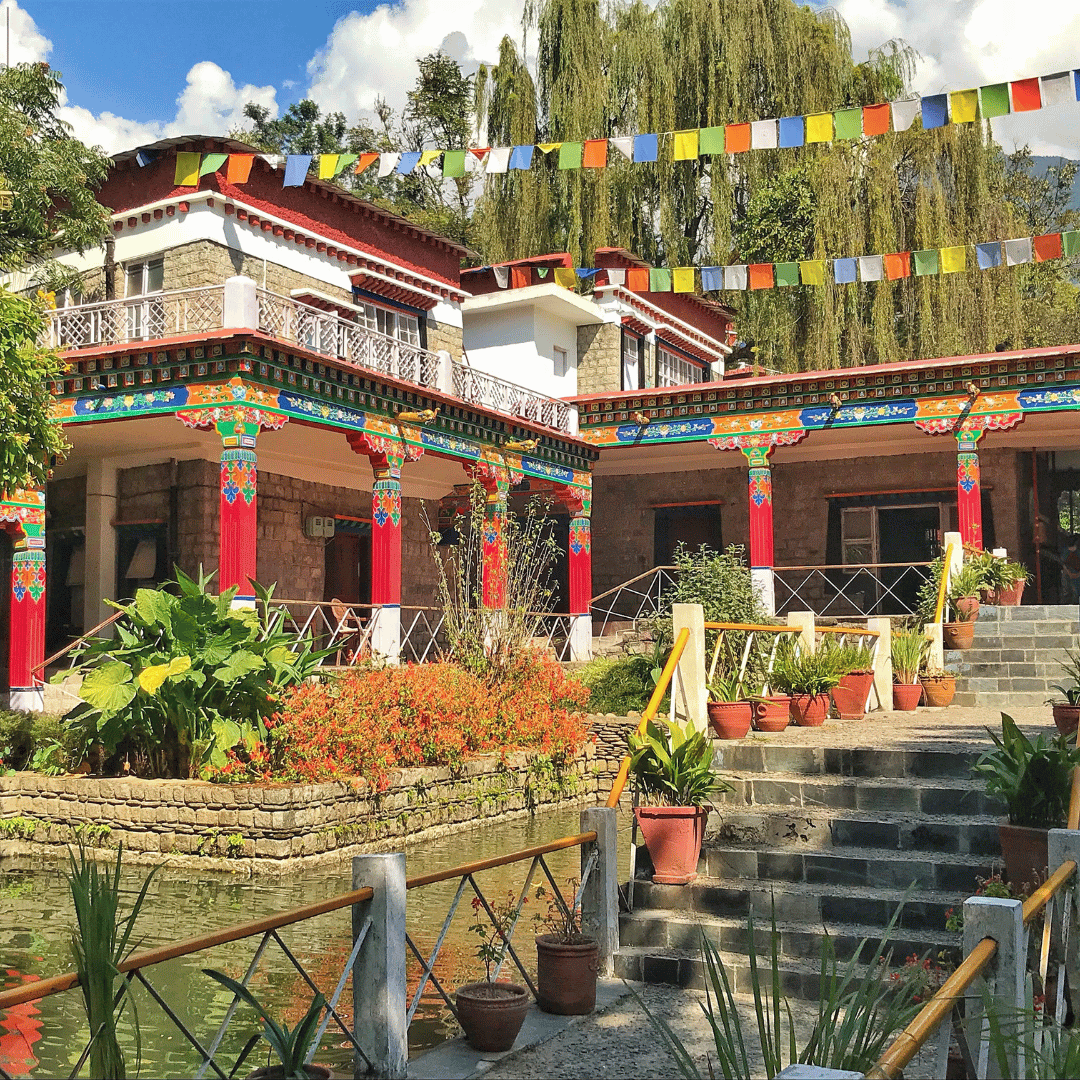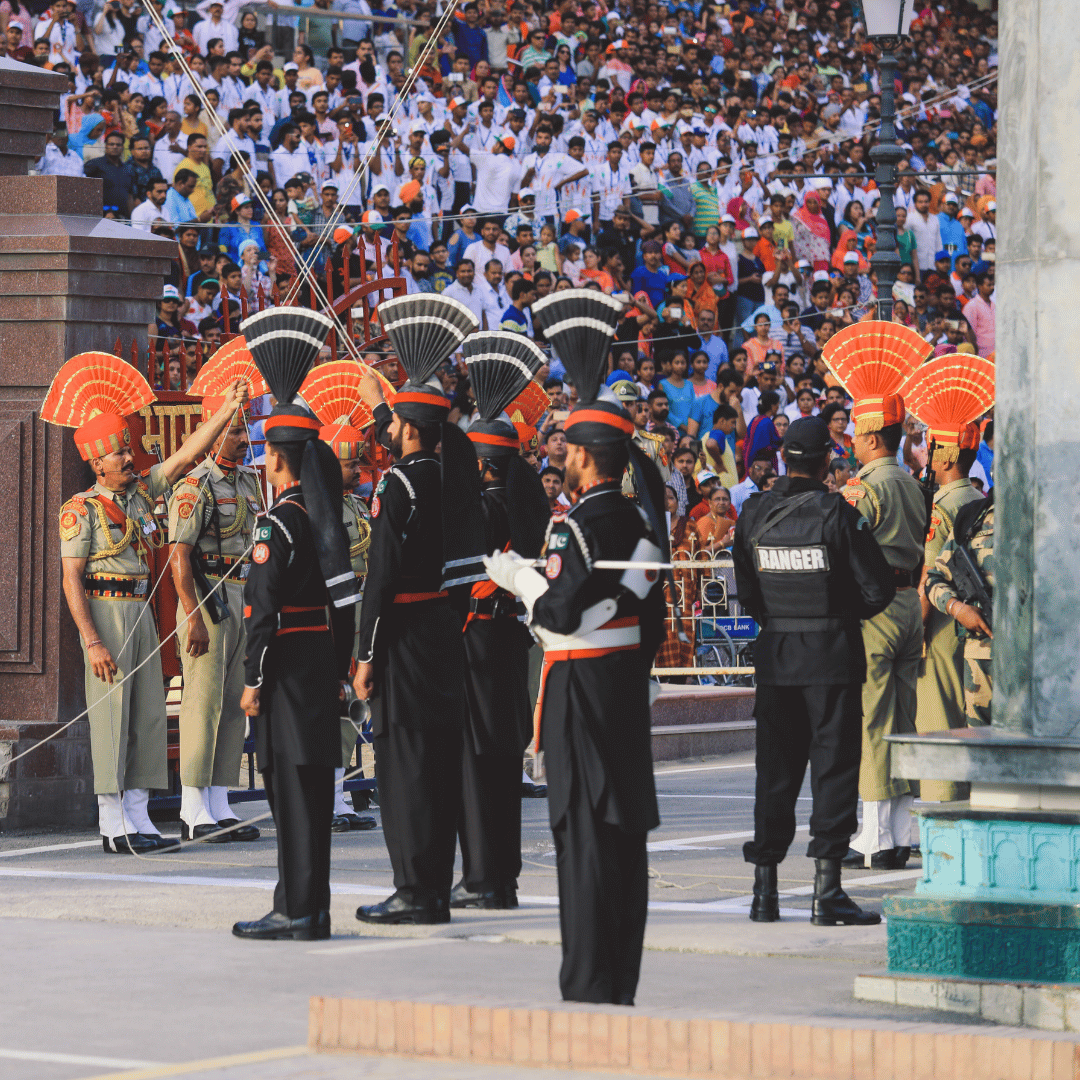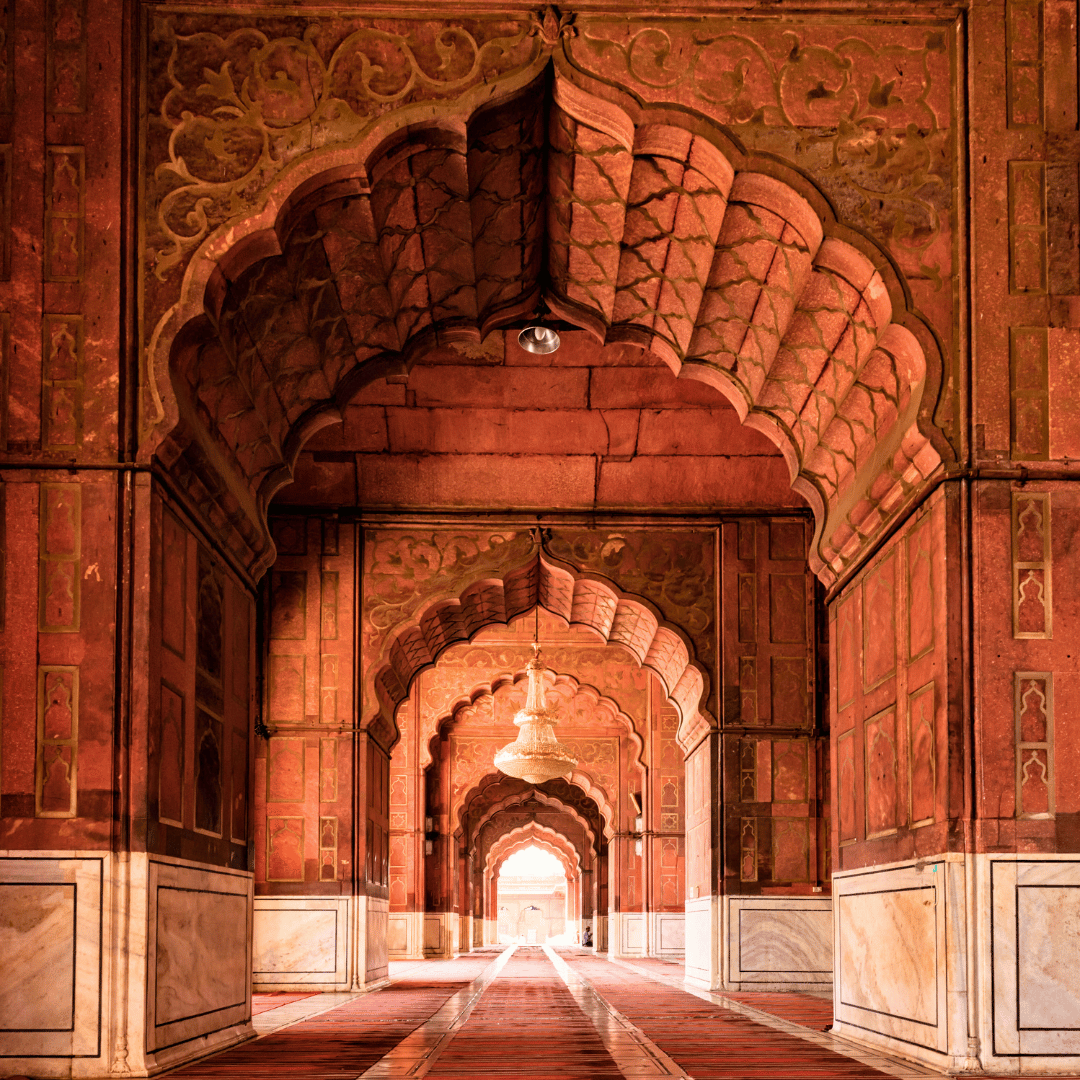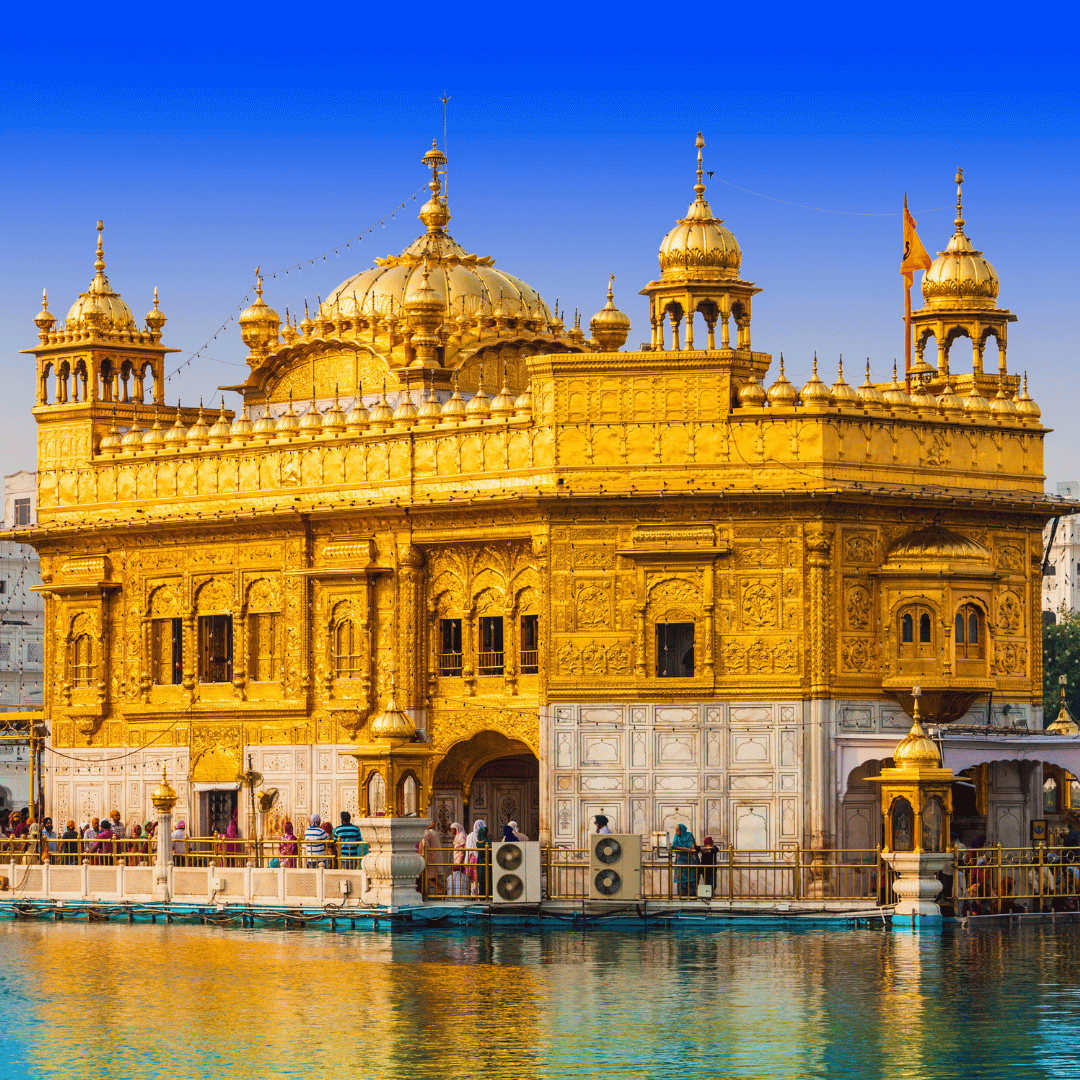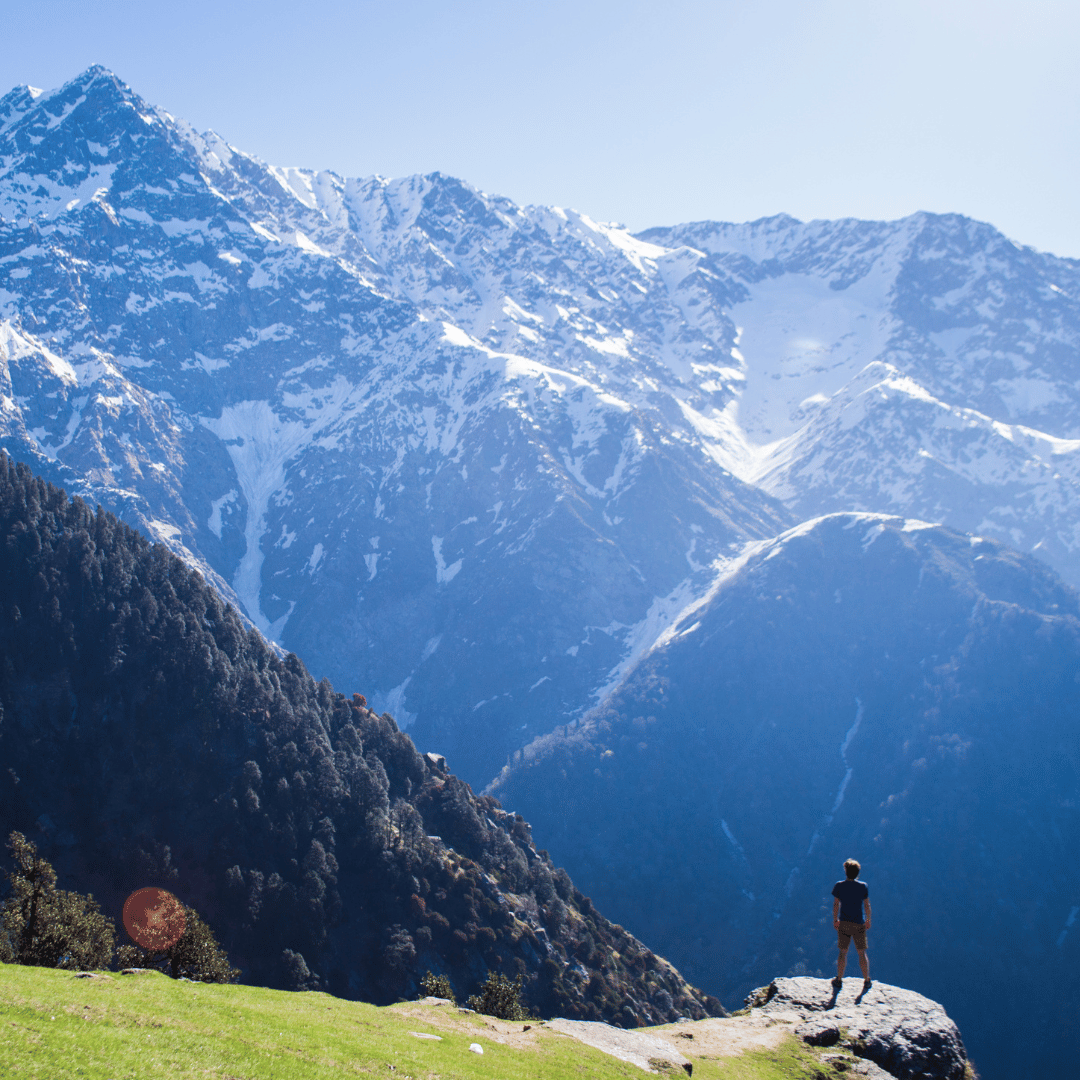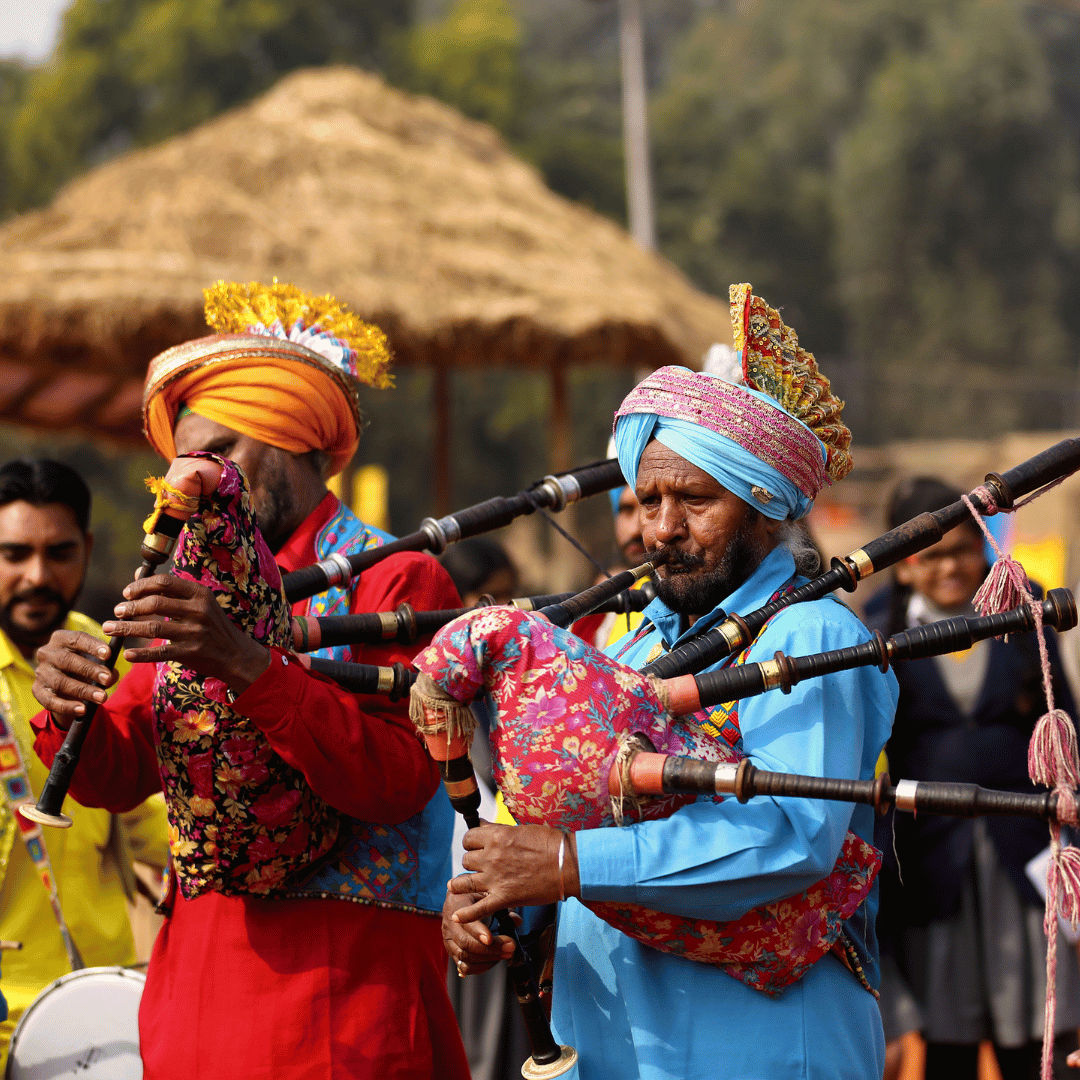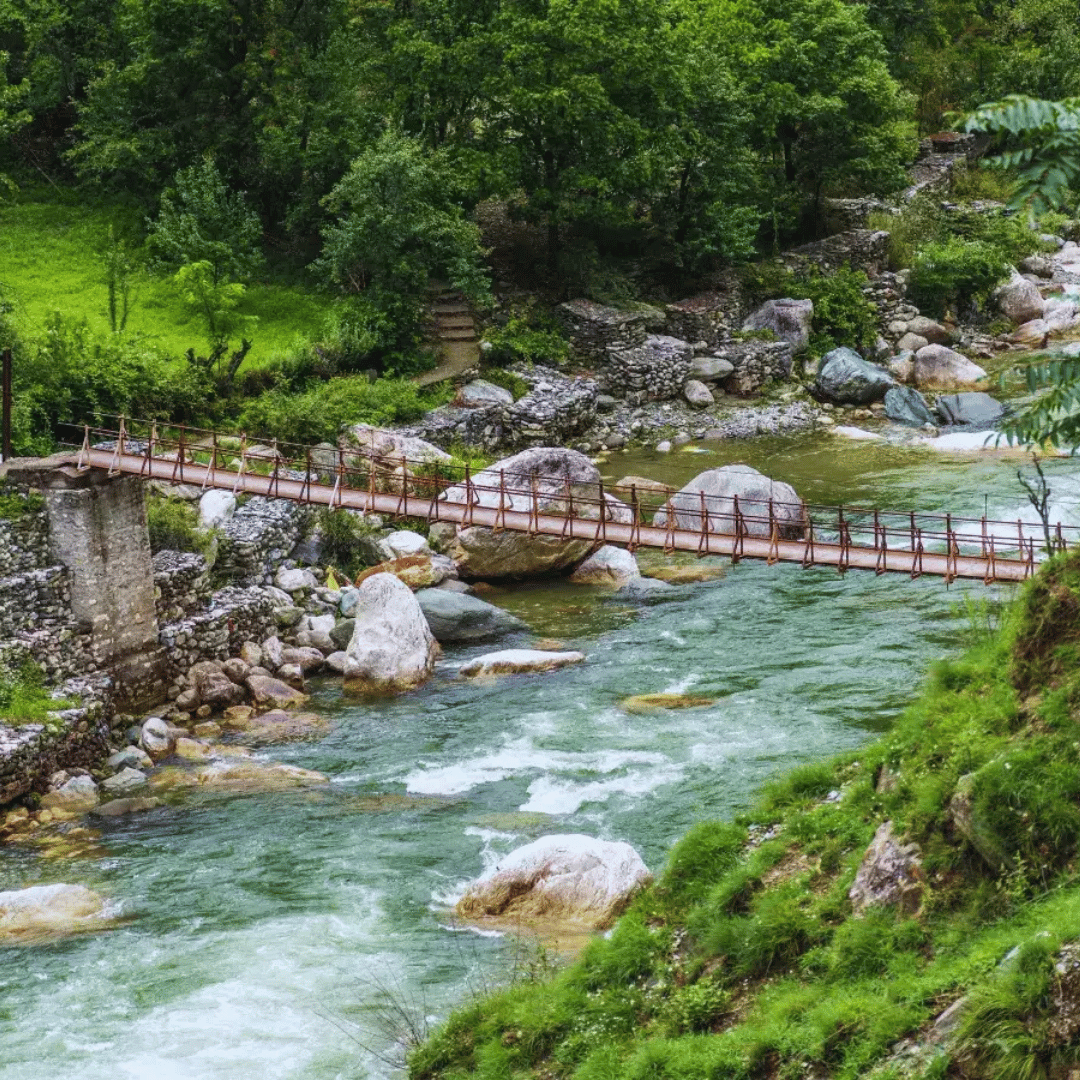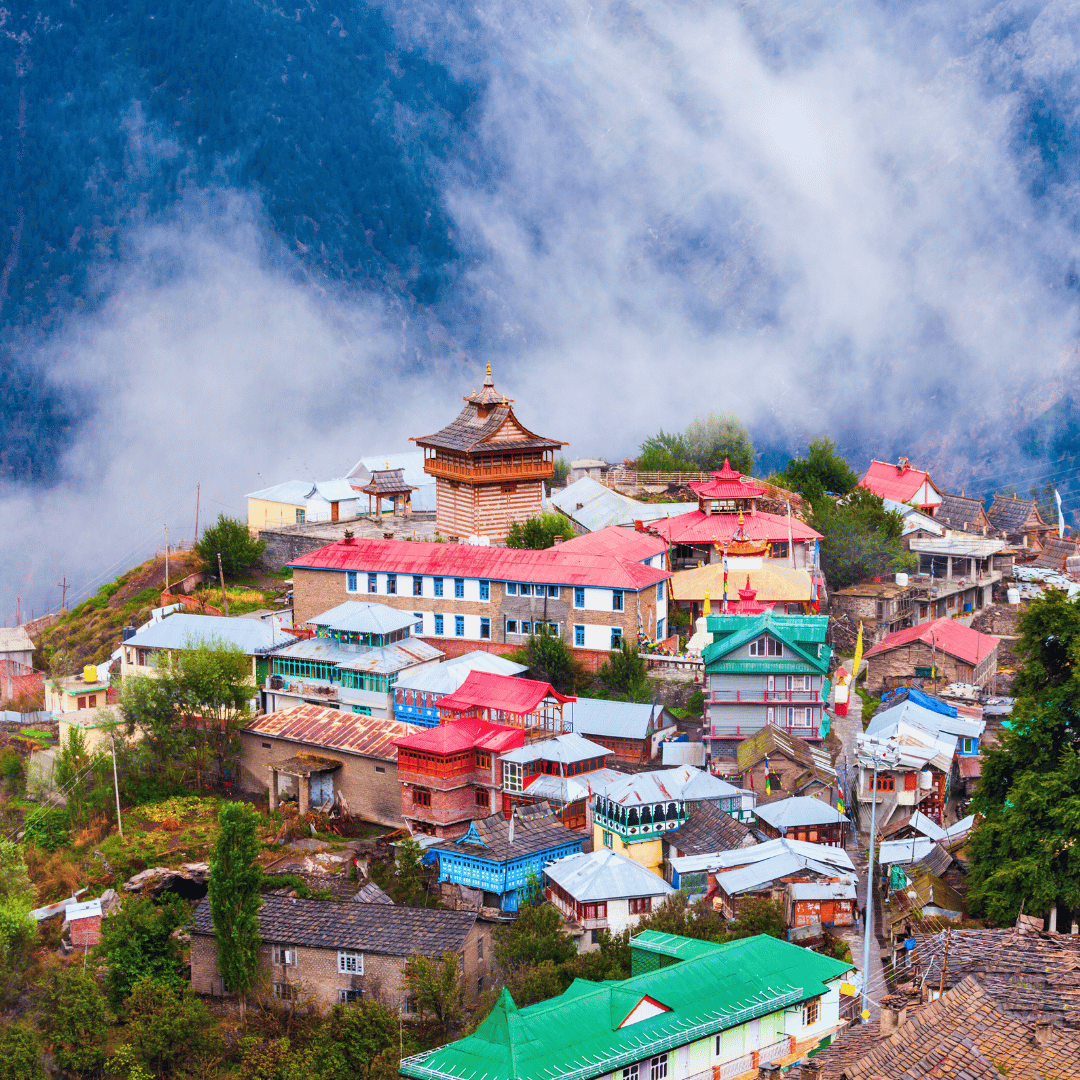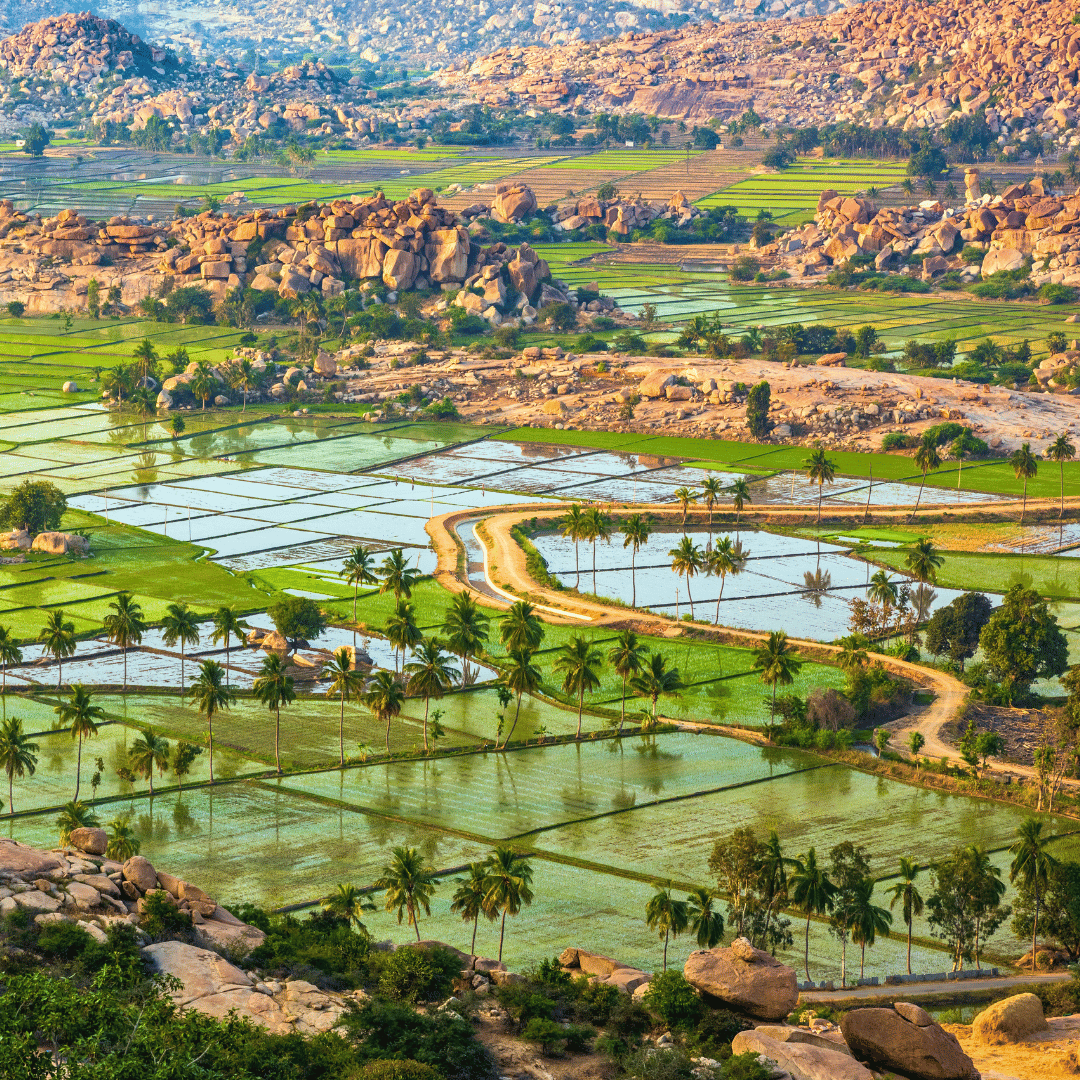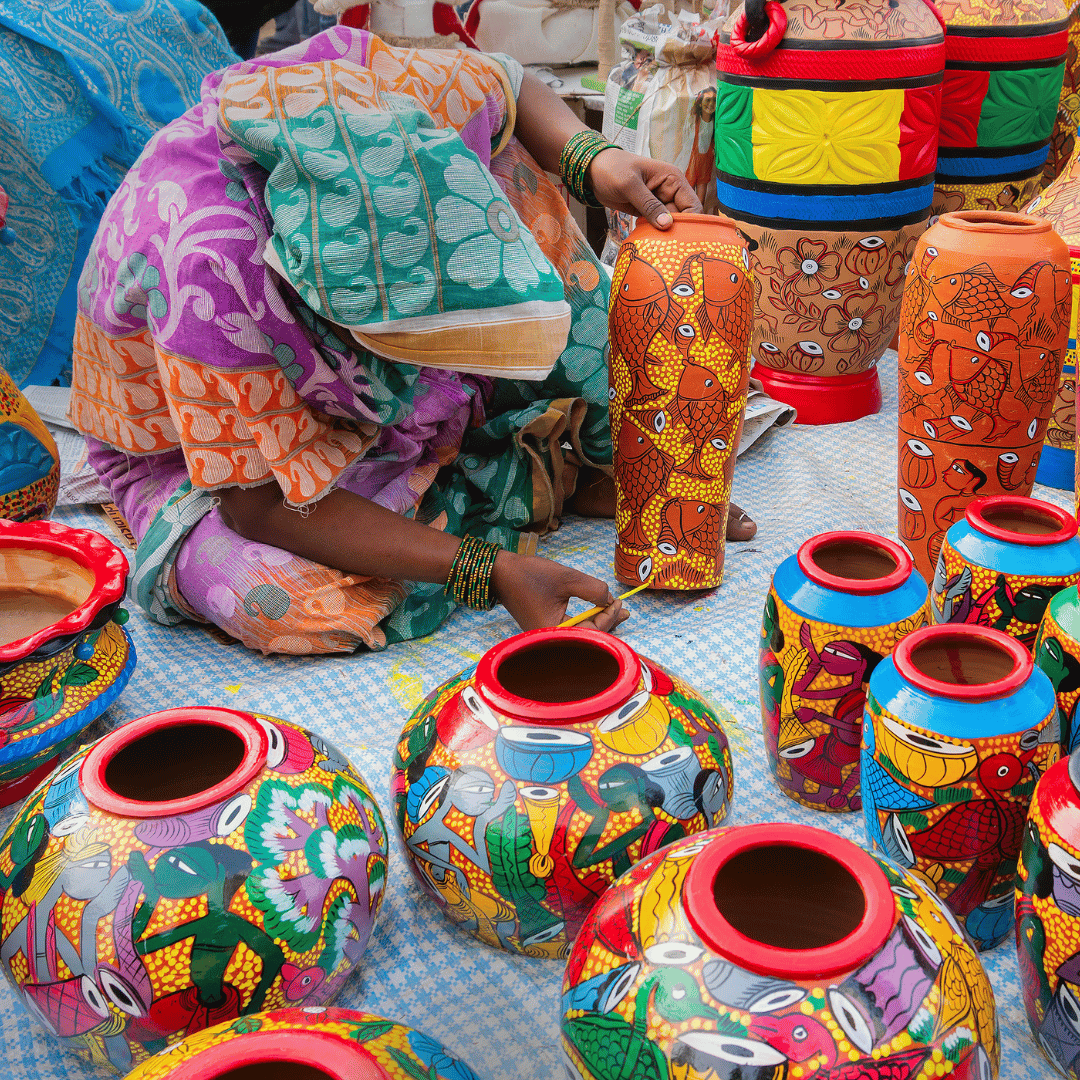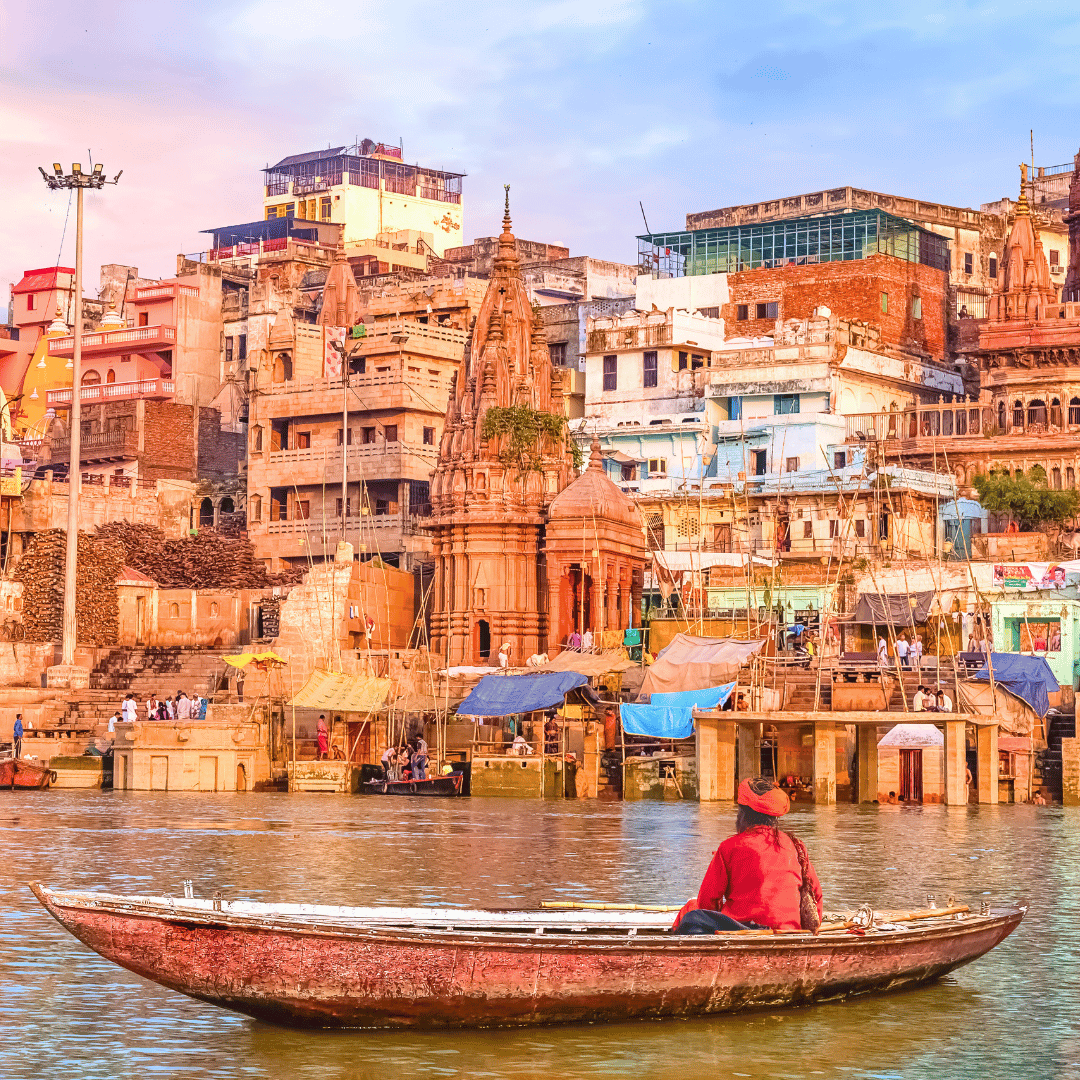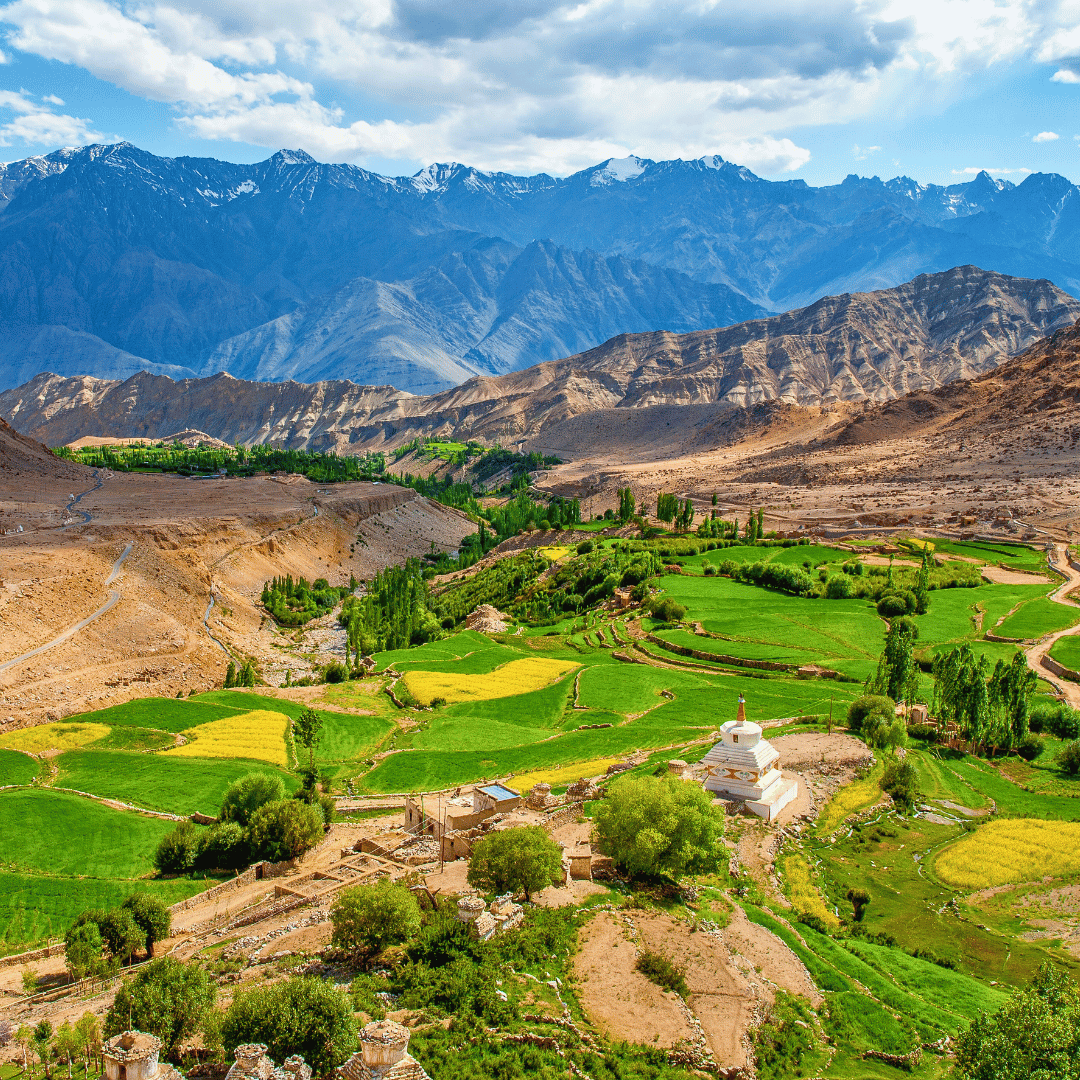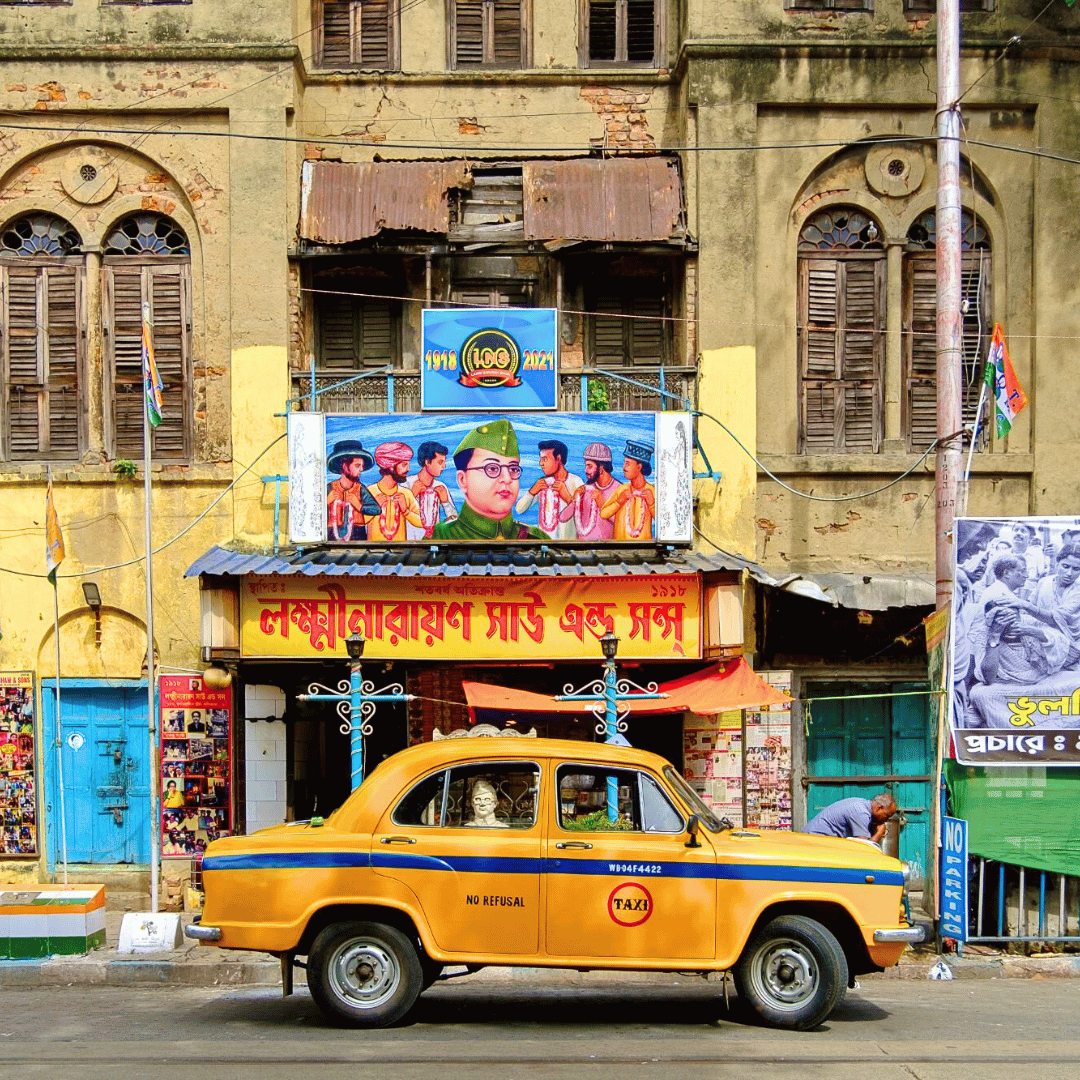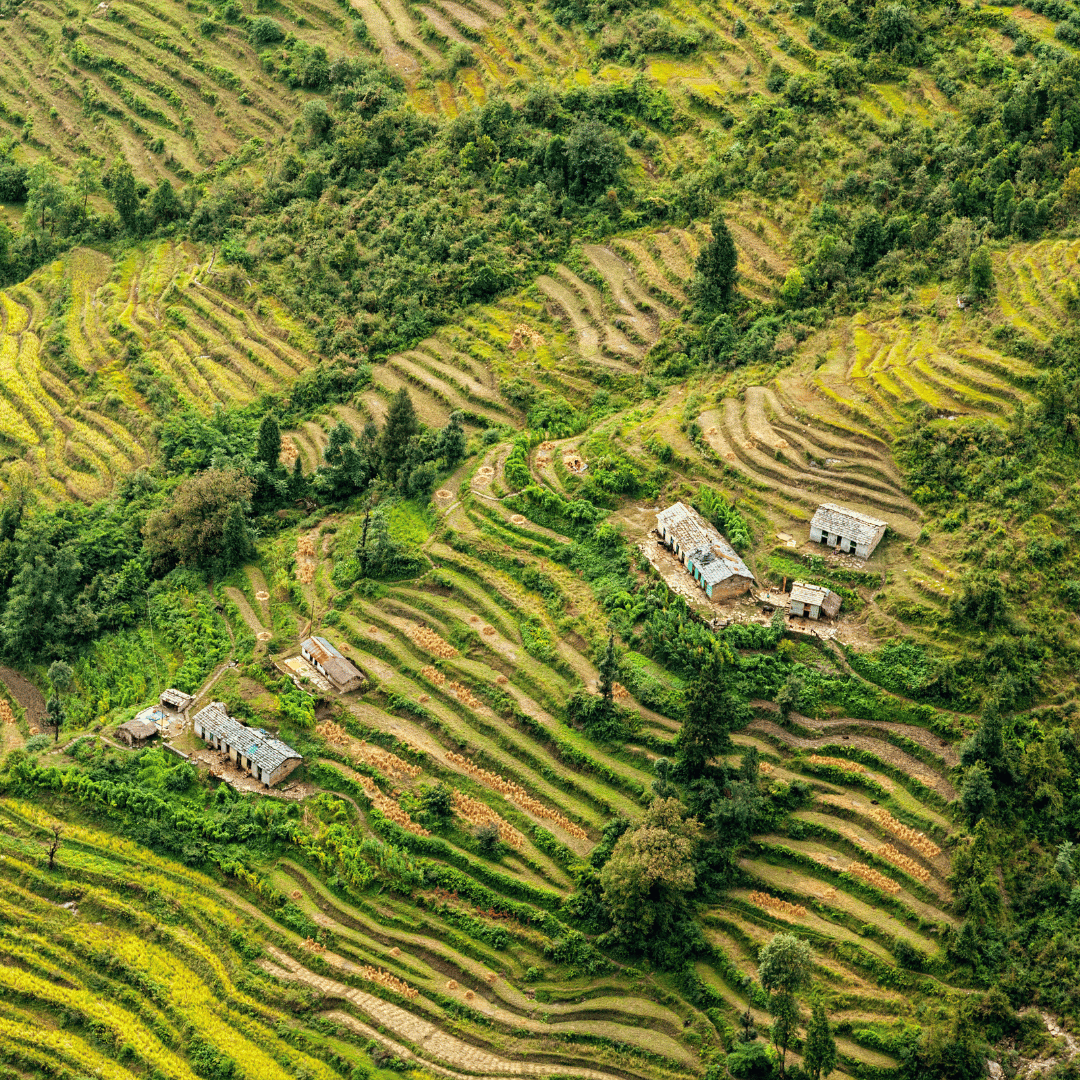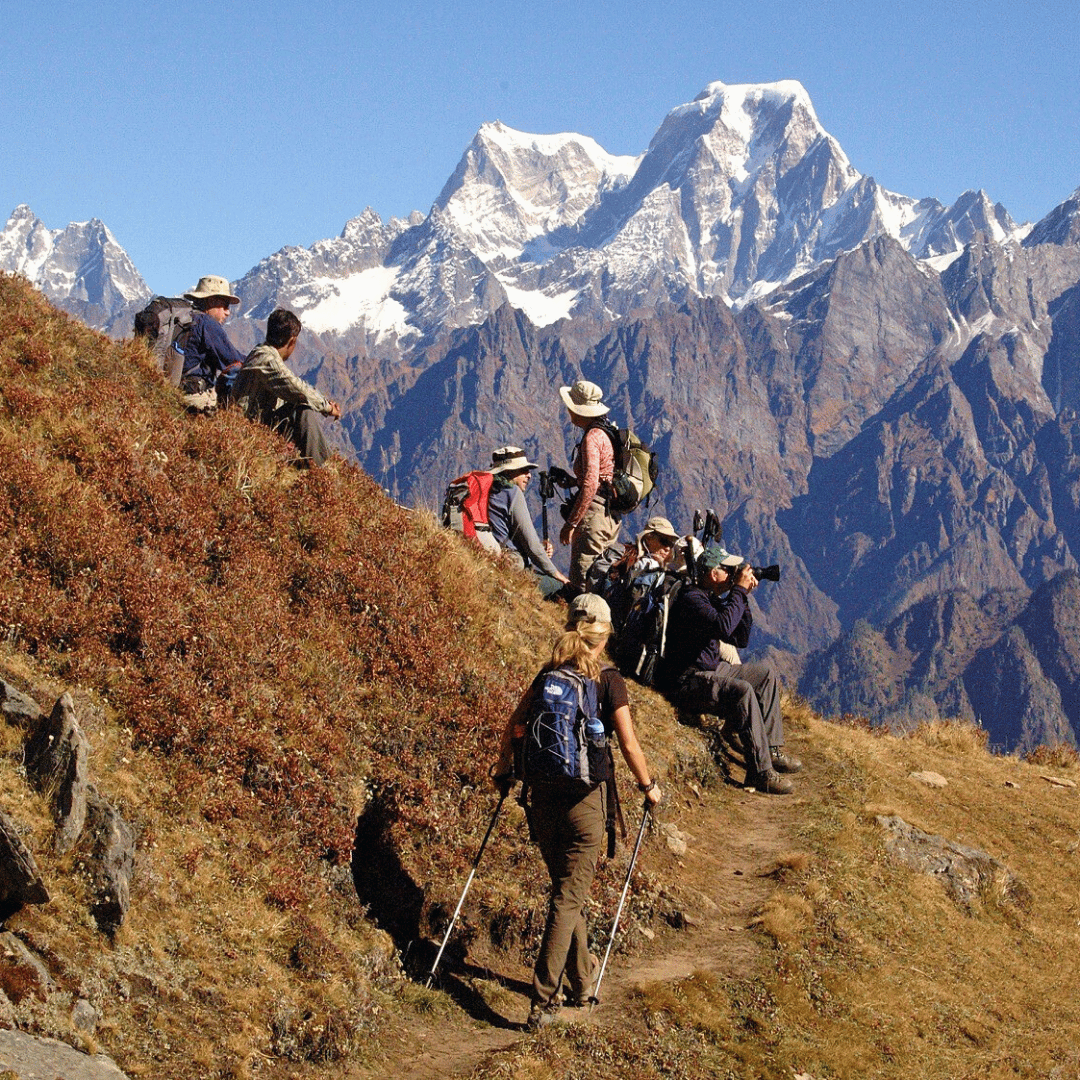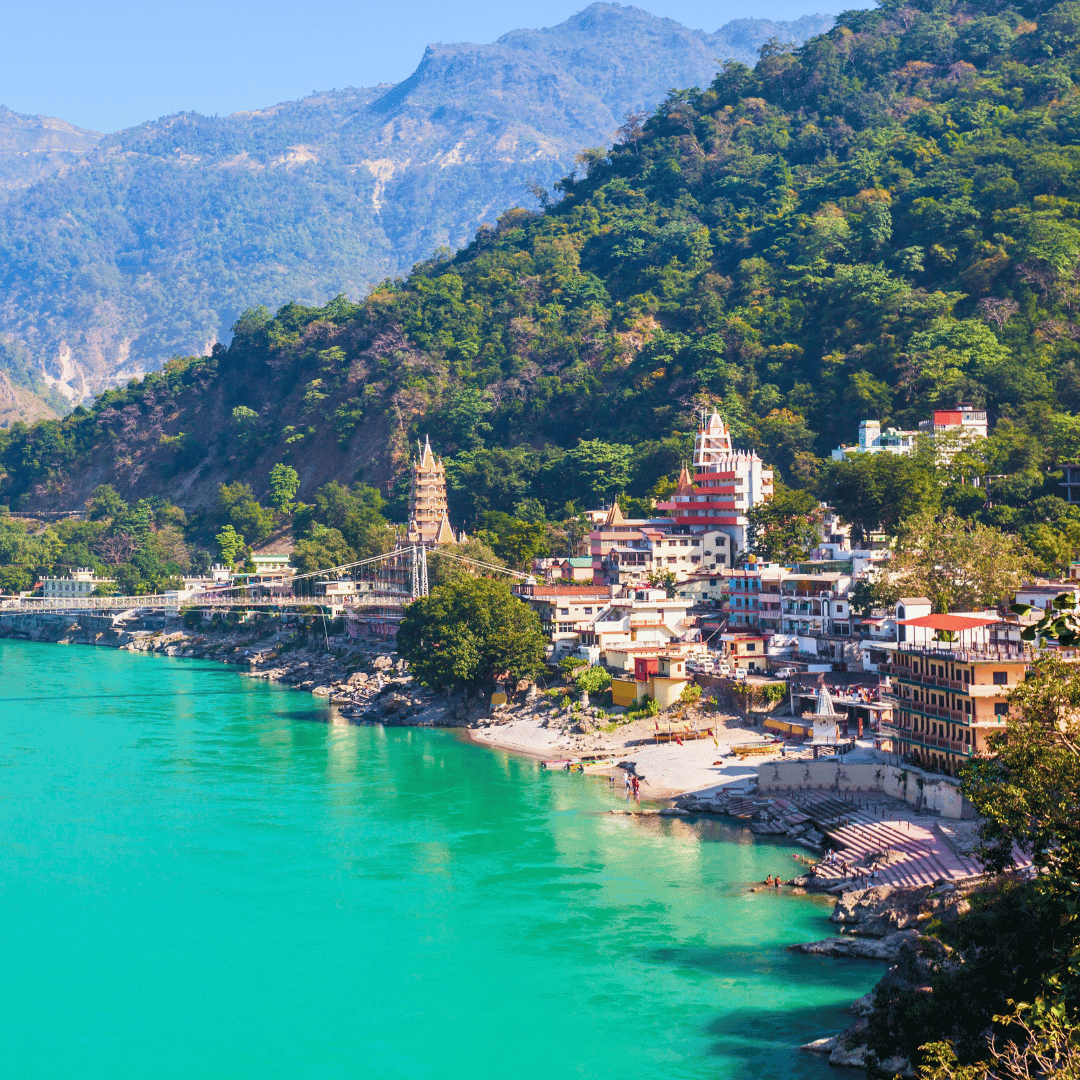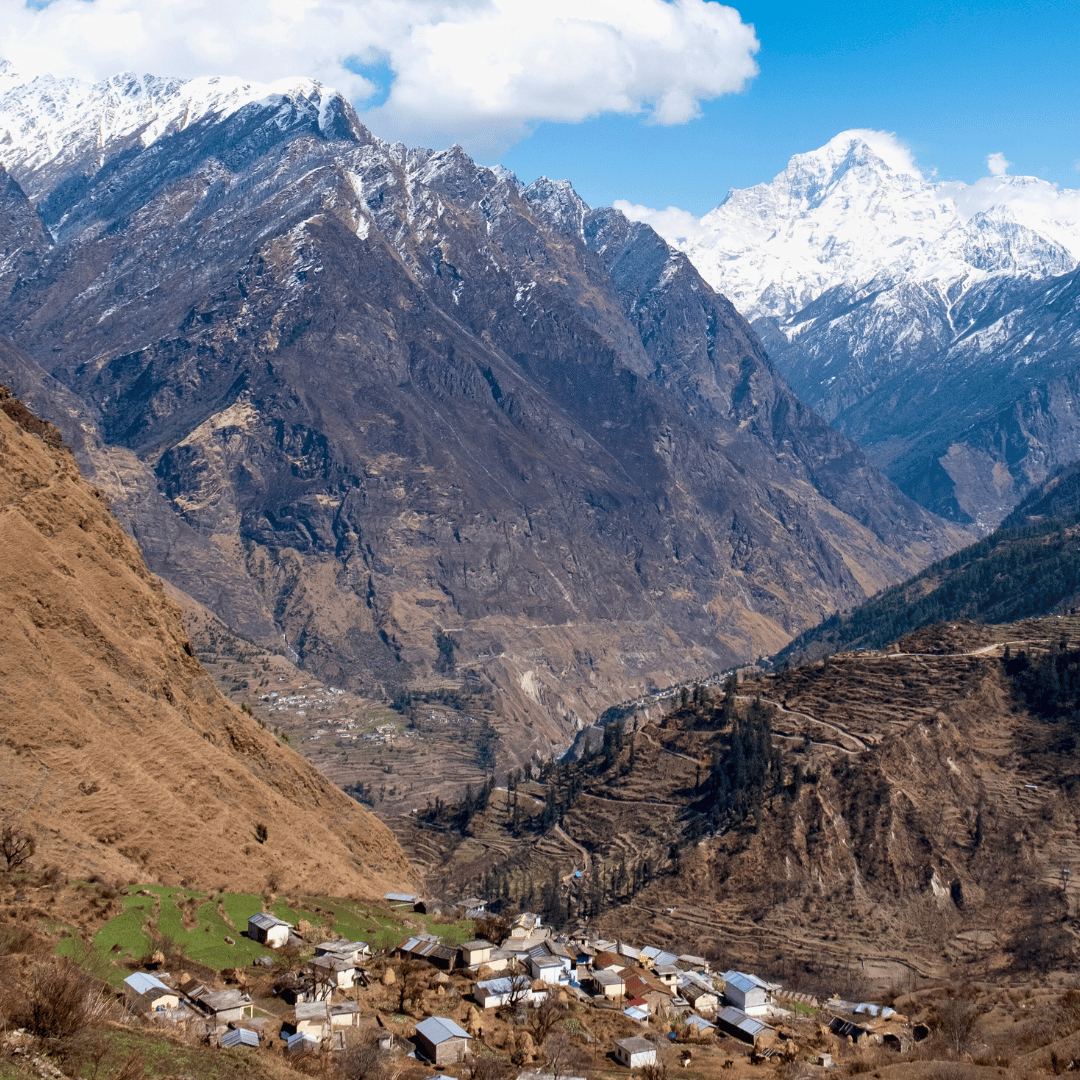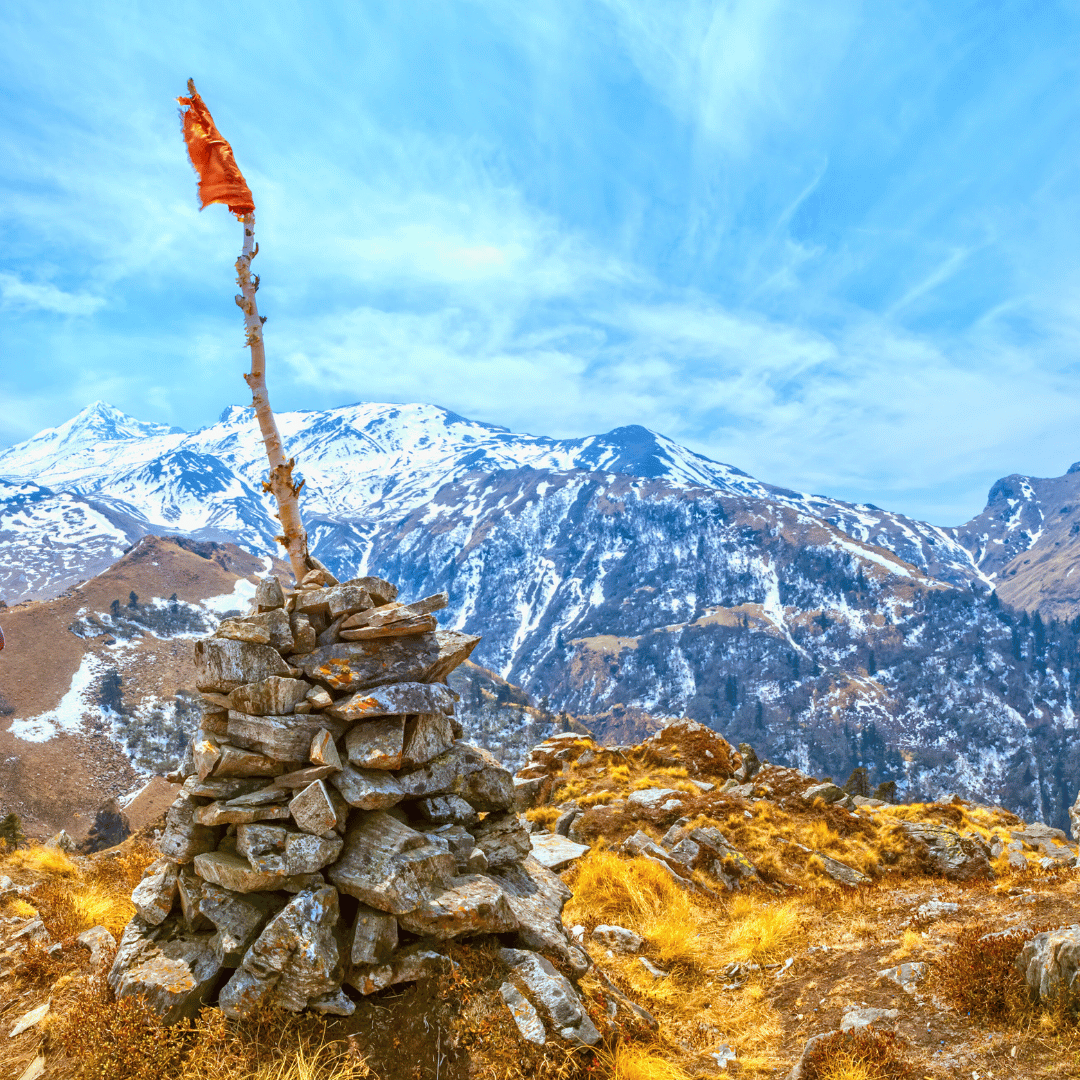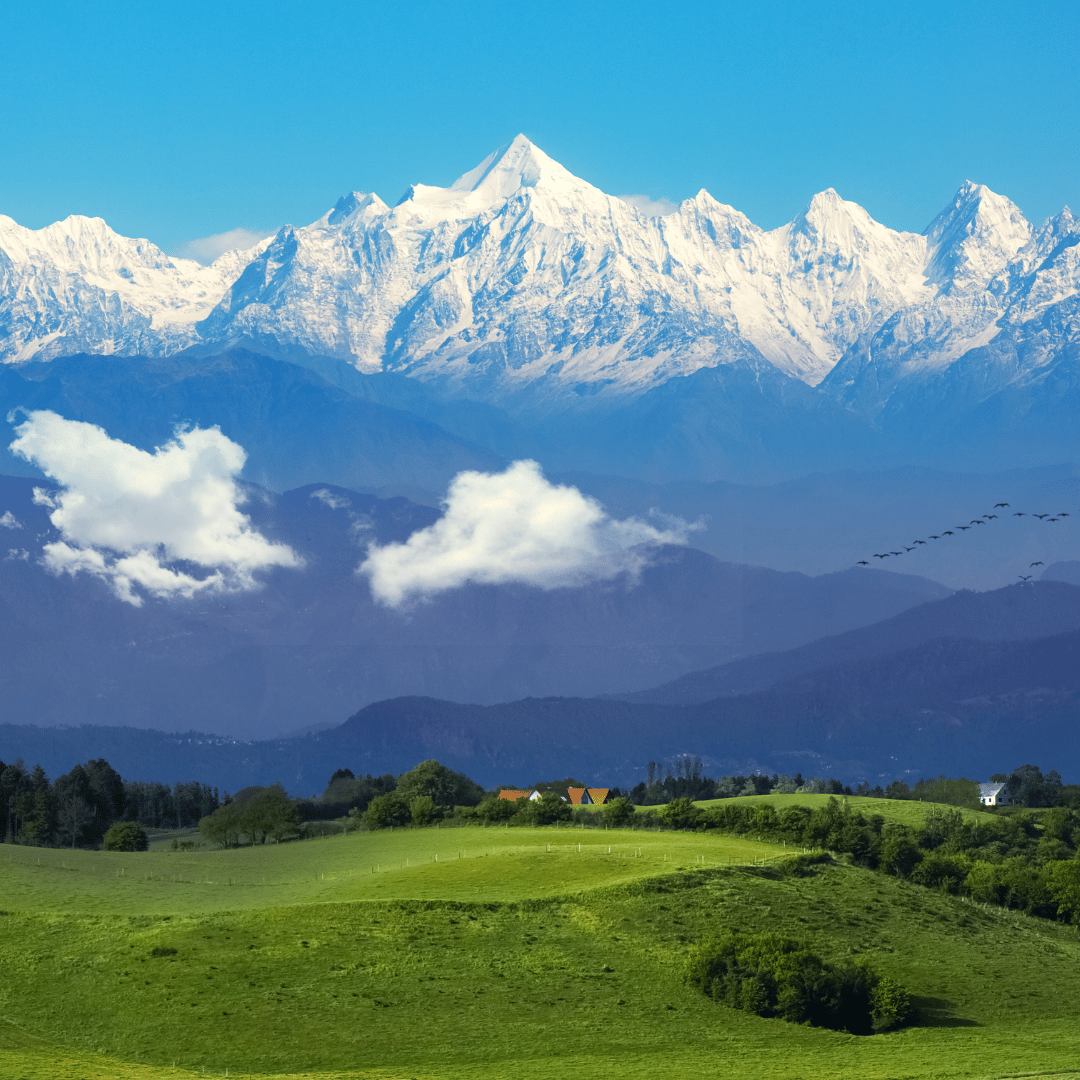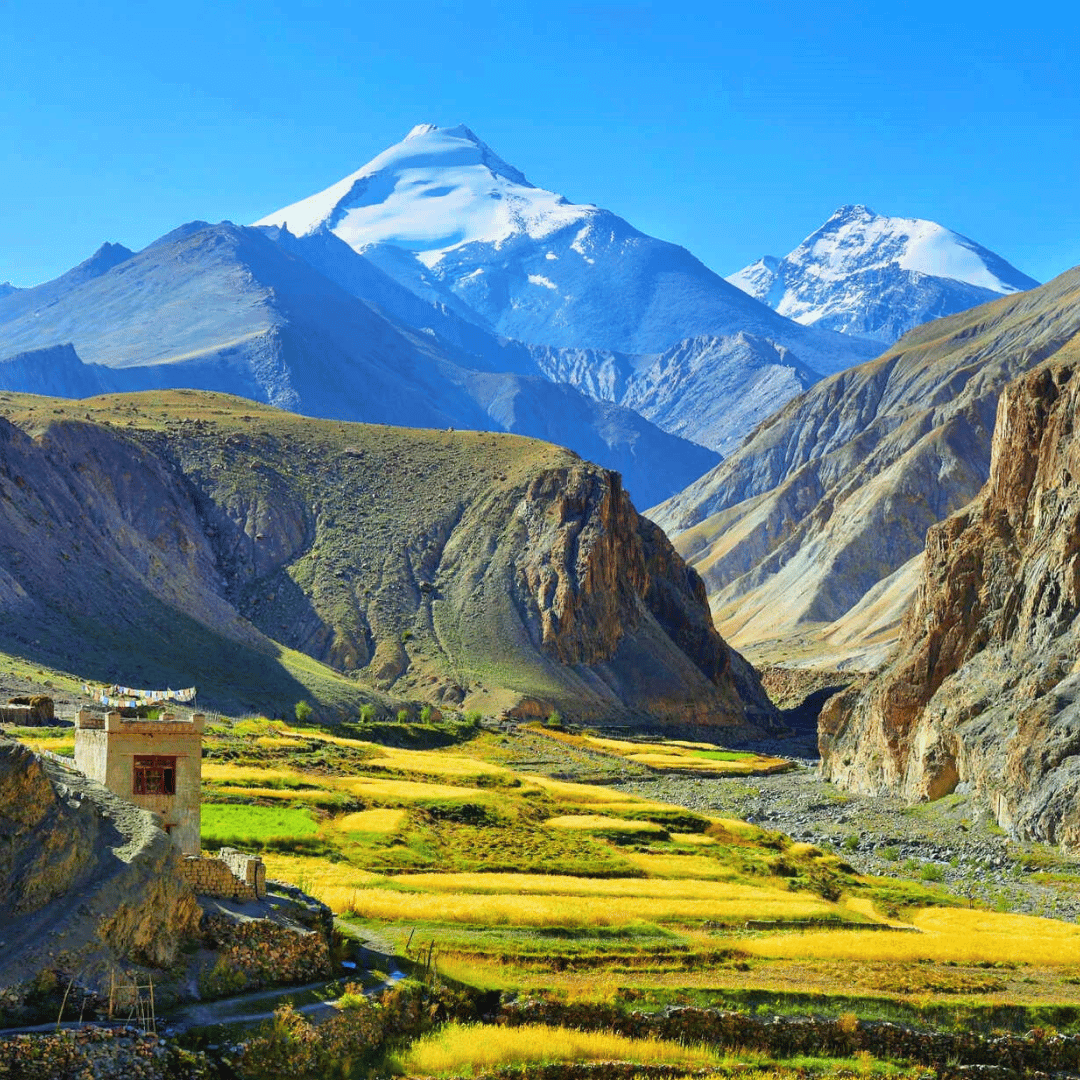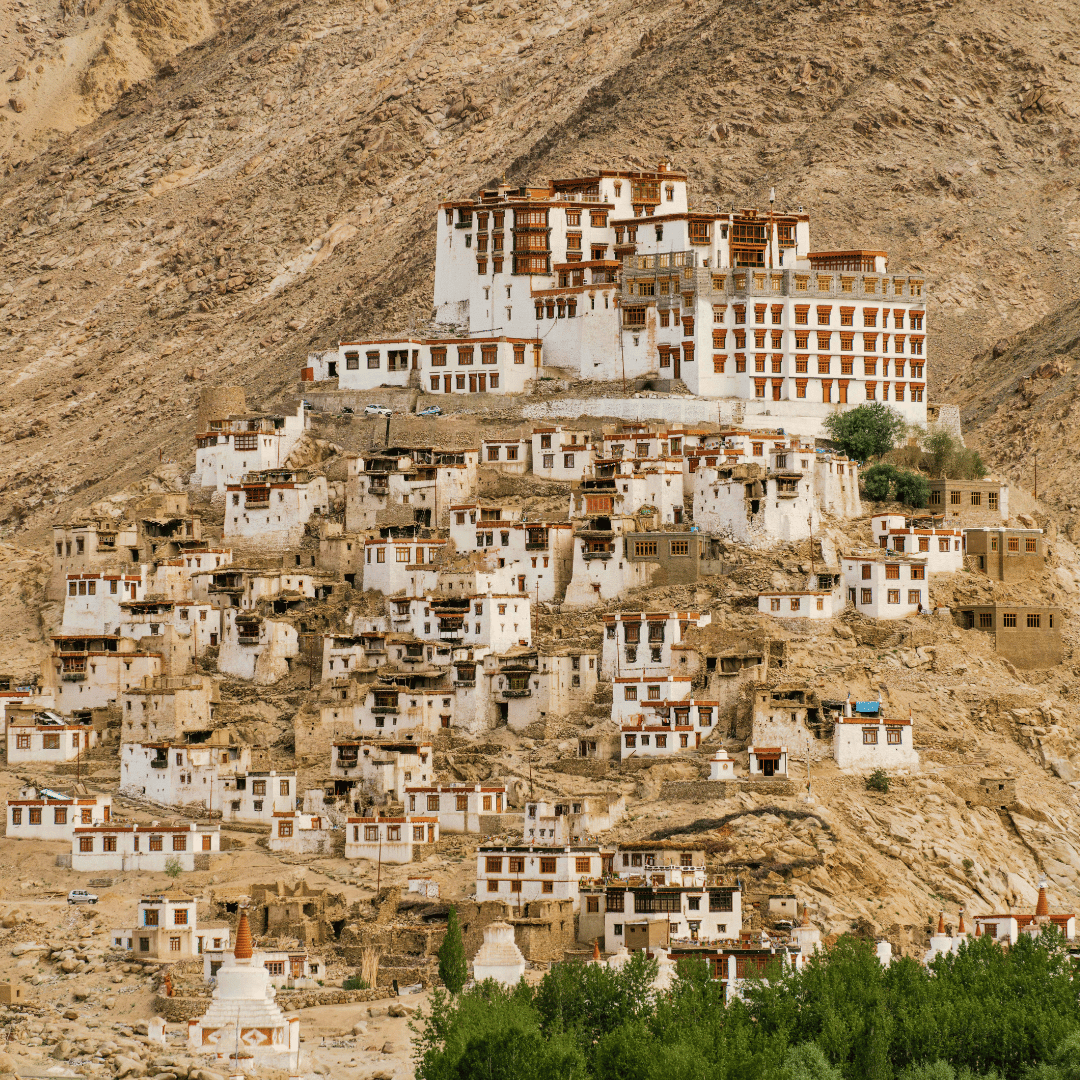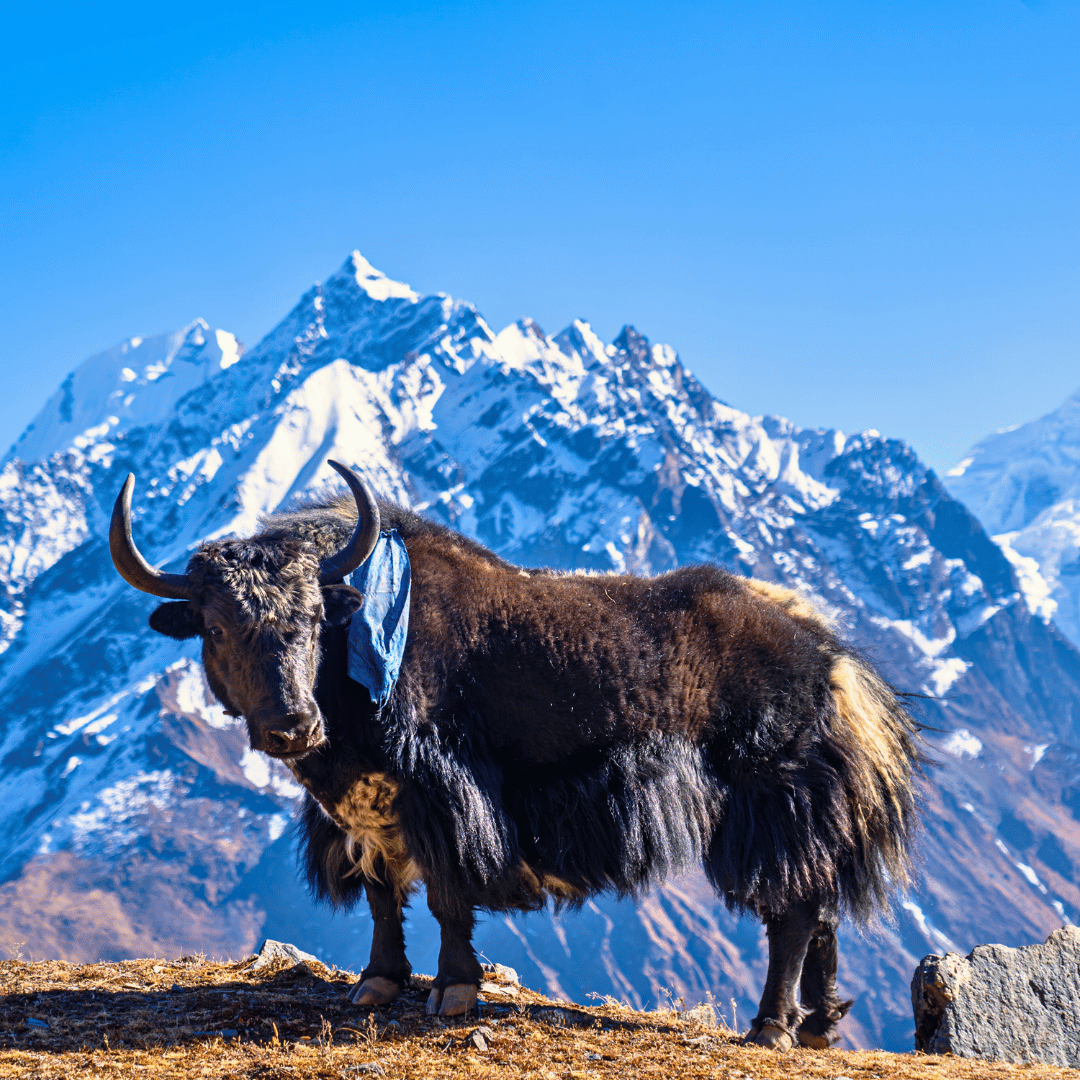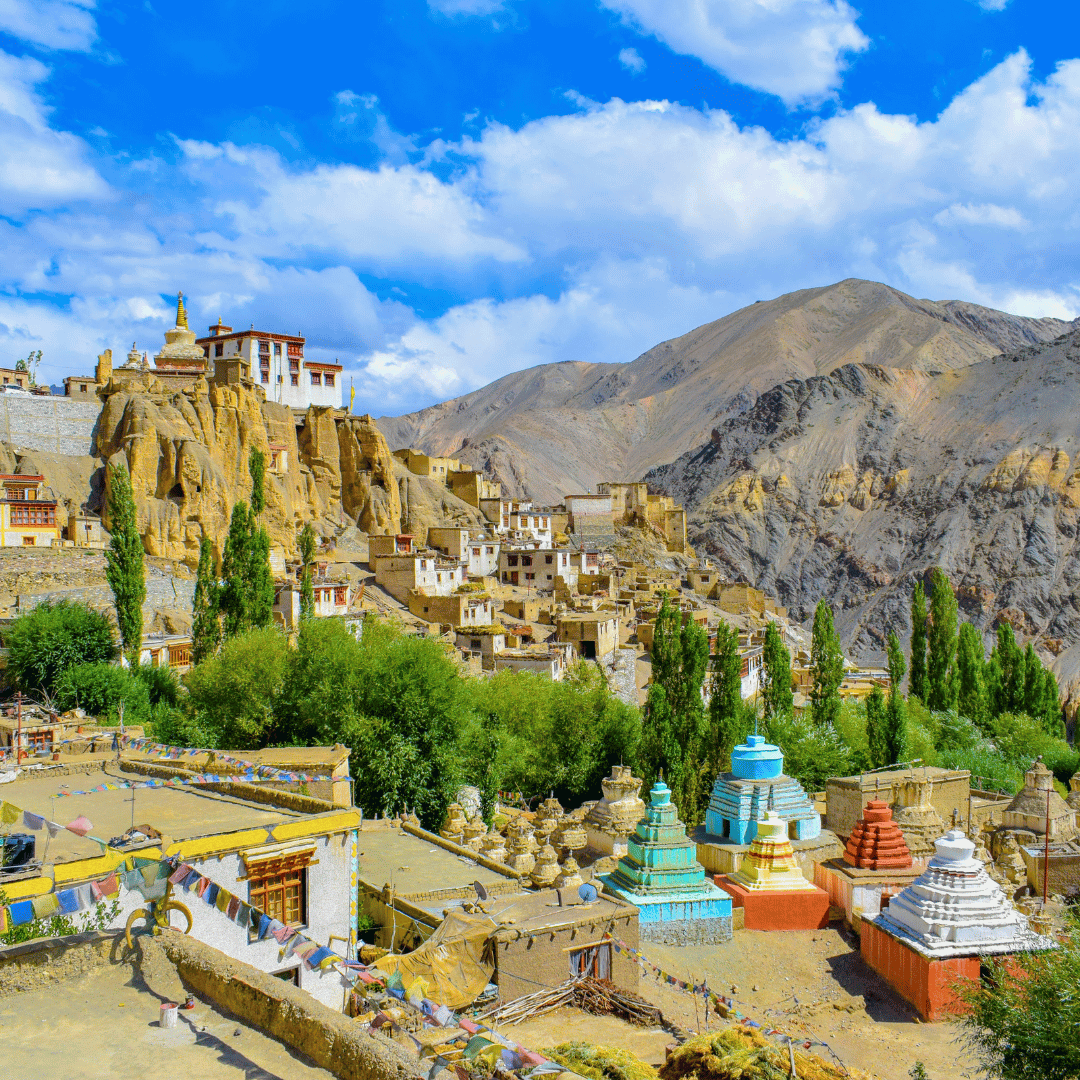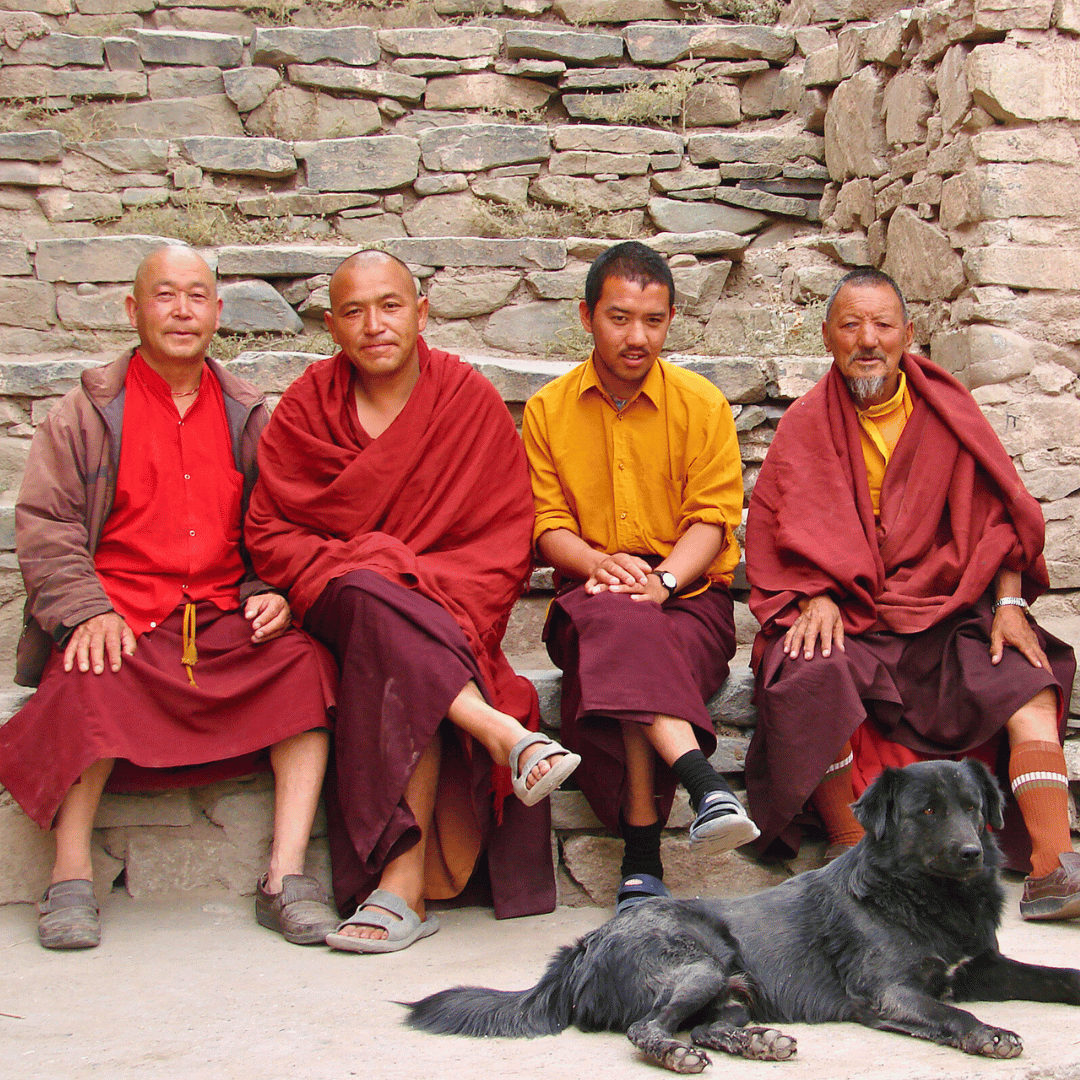Delhi To Leh Discovery Tour Itinerary
-
Welcome to India! On arrival in Delhi, you will be met by our local staff and transferred to your hotel for an overnight stay.
-
Transfer to the railway station this morning to board the ‘Shatabdi Express’ train to Amritsar. Located in the north-western state of Punjab, Amritsar is home to the majority of India’s Sikhs and the site of one of the country’s most stunning temples. You will be met on arrival and transferred to your hotel.
Later this afternoon, drive for an hour to the India-Pakistan border to witness the sunset Wagah border closing ceremony. This unique and colourful ritual sees the Border Security Force (BSF) on the Indian side and the Sutlej Rangers on the Pakistani side perform a well-coordinated display. This evening, visit the beautiful and sacred Golden Temple. Dating back to 1574 (though not completed until 1601), this intricately decorated gurdwara (temple) is the holiest shrine for Sikhs worldwide. Here, you will have the opportunity to witness the ‘aarti’ ceremony.
-
Depart Amritsar this morning for the six-hour drive to Dharamsala, a picturesque mountain retreat that serves as the home in exile of His Holiness the Dalai Lama and a significant Tibetan community. As you ascend into the foothills of the Himalayas, the landscape transforms from the plains of Punjab to lush forests, winding mountain roads, and crisp alpine air. On arrival, check in to your hotel and take some time to settle in.
The rest of the afternoon is free for you to explore at your own pace - take a leisurely walk through the bustling streets of McLeod Ganj, lined with Tibetan cafés, prayer flags, and monasteries, or visit a traditional teahouse to enjoy a warm cup of butter tea. The area is rich in culture, with many opportunities to interact with the local Tibetan community, browse handmade crafts, and sample authentic Tibetan cuisine in one of the many welcoming eateries.
-
This morning, take a half-day tour to visit the Norbulingka Institute and the Museum of Kangra Art. The Norbulingka Institute is dedicated to preserving and promoting traditional Tibetan arts and crafts. Set within beautifully maintained gardens, the institute features workshops, training centres, a temple, a café, and a doll museum. Here, you can watch artisans creating intricate tantric thangkas (embroidered wall hangings), paintings, metalware, furniture, and traditional Tibetan garments. The Museum of Kangra Art houses an impressive collection of Kangra miniature paintings, along with temple carvings, fabrics, embroidery, weapons, and palanquins once used by local rajas. The museum also has a school where students learn the delicate art of miniature painting.
This afternoon, visit the Dalai Lama Temple (Tsuglagkhang Temple), the spiritual centre where the Dalai Lama gives teachings, with his residence located next to the temple complex. Afterwards, stop by Bhagsunag Temple, a small Shiva temple built by the Raja of Kangra in the 16th century. The evening is free for you to explore the lively McLeod Ganj market, where you can browse Tibetan handicrafts, jewellery, and local produce.
-
After breakfast, set off on the seven-hour drive to Manali, stopping along the way to visit Palampur. This lush hill station is surrounded by tea gardens and pine forests, offering a refreshing break amid scenic landscapes. Here, you’ll also visit the ancient Shiva temple at Baijnath, an outstanding example of early medieval north Indian temple architecture, adorned with intricate carvings and significant iconography.
Continuing the journey, stop at Mandi, a historic town known for its impressive collection of around 300 temples, including 81 intricately carved stone temples dedicated to Shiva and Kali. Further along, pass through towns in the Kullu Valley that have retained much of their traditional charm and character. On arrival in Manali, a hill station nestled at the northern end of the Kullu Valley, check in to your accommodation and take the evening to relax.
-
Start the morning with a half-day tour, beginning with a visit to the 400-year-old Hidimbi Devi Temple. This unique cave temple, dedicated to Hidimbi Devi - a character from the Indian epic Mahabharata - is set within a beautiful cedar forest at the base of the Himalayas. Next, visit the Manu Temple, a peaceful shrine dedicated to Manu, the ancient Hindu lawgiver. Finish the morning at Vashisht, a small village known for its natural sulphur springs and a pair of old stone temples dedicated to the local patron saint, Vashista. The smaller temple opens onto a partially covered courtyard and features intricate woodcarvings.
This afternoon, take a half-day tour of Naggar, the former capital of Kullu. This charming village sits along the Beas River, surrounded by dense pine forests. Visit Naggar Castle, built around 1460, a striking medieval structure of stone and timber that blends western and Himalayan architectural styles. Stop by the Nicholas Roerich Museum, the former home of the Russian artist, who lived here from 1923 until his passing in 1947. The museum is well maintained and showcases a collection of his paintings and writings. Before returning to Manali, explore some of Naggar’s old temples, which reflect the region’s deep cultural heritage. The evening is free to wander through Manali’s market, where you can browse local handicrafts, woollens, and souvenirs.
-
Depart Manali today for the six-hour drive to Keylong, crossing over the Rohtang Pass (3,980 metres), a route that offers some of the most spectacular mountain scenery you are likely to encounter anywhere in the world. The pass serves as a natural divide between the lush, humid Kullu Valley to the south - with its predominantly Hindu culture - and the arid, high-altitude Lahaul and Spiti valleys to the north, where Buddhist traditions prevail.
At 3,340 metres, Keylong is a striking contrast to its rugged surroundings, with its green fields, willow trees, and flowing streams set against a backdrop of brown hills and snow-capped peaks. On arrival, check in to your hotel before heading out to visit Khardong Monastery and village. This impressive white monastery, adorned with fluttering prayer flags, is believed to date back to the 12th century. It houses an extensive library of Buddhist literature, a collection of fine thangkas, traditional musical instruments such as lutes, drums, and horns, as well as old weapons. The monastery is also decorated with vivid frescoes and intricate murals that reflect the region’s deep spiritual heritage. The evening is free for you to explore Keylong at your own pace.
-
Today, drive for six hours from Keylong to Sarchu, crossing the high-altitude Baralachala Pass (4,800 metres). Sarchu (4,290 metres), situated on the border of Himachal Pradesh and Ladakh, is a key overnight stop on the Leh to Manali Highway. Once a significant trading point on the ancient Silk Route, it remains a hub for traders, nomadic tribes, and adventure travellers. With its stark, rugged landscape, Sarchu closely resembles the terrain of Ladakh.
On arrival, check in to your camp, where you will spend the night in compact canvas tents equipped with hygienic meals and eco-friendly waste management systems. The evening is free to relax and take a walk in Sarchu, soaking in the dramatic surroundings of this remote, high-altitude landscape.
-
Today’s journey is a full-day drive - around 10 hours - from Sarchu to Leh, crossing the high-altitude passes of Lachung La (5,065 metres) and Tanglang La (5,360 metres). Leh, the capital of Ladakh, is a remote town set in a dramatic high-altitude landscape, surrounded by barren mountains with distant snow-capped peaks. Nestled in a fertile valley at the foot of Namgyal Tsemo peak, Leh has long been a centre for trade, historically attracting merchants from across North India. The Silk Road brought Buddhist travellers to the region, and today, the town remains predominantly Buddhist, with monasteries and prayer flags dotting the landscape. Leh will serve as our base for several day trips, offering opportunities to explore its rich history and breathtaking surroundings.
-
After breakfast, set out on a full-day excursion to explore some of the region’s most significant monasteries. Begin with a visit to Shey, the ancient capital of Ladakh. Its abandoned palace houses a temple featuring an enormous Buddha statue from the late 17th century, surrounded by vibrant murals of deities painted in gold and rich colours.
Next, visit Thiksey Monastery, an impressive 12-storey complex often compared to the Potala Palace in Lhasa, Tibet. The monastery is home to a remarkable collection of Buddhist art, including stupas, statues, thangkas, wall paintings, and swords. Continue to Hemis Monastery, the largest and wealthiest monastery in central Ladakh, founded in the 1630s. Among its many temples, the most striking contains a magnificent Buddha image set before a massive silver chorten adorned with turquoise.
End the day with a visit to Stok Palace, the residence of the Namgyal family, the former rulers of Ladakh. The palace features a museum showcasing the dynasty’s history, including a collection of thangkas depicting the life of Buddha, as well as ritual objects, jewellery, elaborate headdresses, and royal robes. Return to Leh in the evening.
-
After breakfast, check out of the hotel and set off on a full-day excursion, beginning with a four-hour drive to Lamayuru Monastery. Dating back to the 11th century, this historic monastery is home to an impressive collection of thangkas and serves as an important spiritual centre. Its dramatic cliff-side location adds to its allure, with the dusty village below spilling down the steep mountainside, creating a striking landscape.
After exploring the monastery, continue the journey with a two-and-a-half-hour drive to Uletokpo, where you will spend the night.
-
Return to Leh today, stopping along the way to visit Alchi, Likir, and Basgo monasteries.
Alchi Monastery is considered the jewel of Ladakh’s monastic sites. Founded in the early 12th century, it ceased to be an active place of worship in the 16th century, which has helped preserve the vibrant paintings inside its temples, untouched by soot from butter lamps and incense. Take a stroll through Alchi village to soak in its peaceful atmosphere.
Continue to Likir Monastery, also dating back to the 12th century. This monastery is home to a remarkable collection of thangkas and several statues set within beautifully carved wooden frames.
At Basgo, explore the remains of a hillside citadel that includes several Buddhist temples attached to a ruined castle. The highlight is the Maitreya Temple, which houses a two-storey-high golden statue of the future Buddha, surrounded by striking murals depicting fierce guardian deities that once protected the royal family who lived here.
Arrive in Leh by late afternoon.
-
After breakfast, set off on a full-day excursion, travelling along what is often considered the world’s highest motorable road to Khardung La (5,600 metres), the gateway to the Shyok and Nubra valleys. Historically significant, Khardung La was a key point on the major caravan trade route from Leh to Central Asia, serving as a ‘feeder’ for the famous Silk Route. In its heyday, around 10,000 horses and camels passed through this route each year. Even today, a small population of Bactrian camels, descendants of those once used for trade, can still be seen at Hunder, north of the pass. After taking in the breathtaking high-altitude landscape, return to Leh.
-
This morning, take a half-day tour of Spituk and Phyang monasteries. Perched dramatically on a hilltop, Spituk Monastery was founded by the Gelugpa sect in the 15th century. It houses the library of the sect’s founder, Tsongkhapa, along with a shrine dedicated to the goddess Tara in her many manifestations. Phyang Monastery, located in one of Ladakh’s most picturesque villages, was established by Ladakh’s 16th-century ruler, Tashi Namgyal. It features sacred shrines, vibrant frescoes, and a museum with an extensive collection of fine Kashmiri bronzes of Buddhist deities, likely dating back to the 13th century. The museum also displays thangkas, as well as Chinese, Tibetan, and Mongolian firearms and weapons.
In the afternoon, visit the imposing nine-storey Leh Palace, which overlooks the city. Built in the 1630s by Sengge Namgyal - Ladakh’s most renowned king and a prolific builder of monasteries and forts - the palace was designed as a miniature version of Lhasa’s Potala Palace. Though now in a state of disrepair, there is still much to explore, including an atmospheric temple within the complex. The views from its balconies and windows are spectacular. A wander through the maze of narrow cobblestone alleys, ancient homes, and low-vaulted tunnels of the Old Town offers a fascinating glimpse into Leh’s history and character.
Continue to the well-preserved 19th-century Shankar Gompa, set among trees above the town. Climb the steps to its richly painted double doors, which open into the assembly hall featuring three green drums. Upstairs, the inner sanctuary houses an impressive figure of Avalokitesvara, depicted with 1,000 arms (each holding a weapon) and 1,000 heads. The walls are adorned with a Tibetan calendar, mandalas, and monastic rules. Above the wooden staircase, you can see the Abbot’s quarters, guest rooms, and the library.
Finally, visit the striking white Shanti Stupa (Peace Pagoda), perched on a hilltop west of the city. Inaugurated by the Dalai Lama in the 1980s, it offers a vast courtyard at its base with sweeping panoramic views of Leh and the surrounding mountains. End the day with a stroll through the lively Leh Bazaar, where you can browse colourful stalls and experience the local atmosphere.
-
All good things must come to an end, but we hope you’ve enjoyed your road trip from Delhi to Leh. Transfer to the airport to board a flight to Delhi.
The India Unbound Difference
At India Unbound, we’ve spent twenty years on the ground in India, learning all about its intricacies, landscapes and cultures. We use this first-hand knowledge to carefully curate travel itineraries for our guests, and are proud to be a reputable private touring specialist. In addition, our team of local partners offer guarantees of punctuality, quality and service. All of our India private tour itineraries include all accommodation mentioned, daily breakfasts and other meals as specified, all transfers, touring and sightseeing by air-conditioned Toyota Innova or similar vehicle, and internal flights as outlined in the itinerary. Private activities and sightseeing with English-speaking local guides are included, along with entrance fees, drinking water in the vehicle, and all vehicle-related charges such as tolls, parking fees, and taxes. The cost does not include visas or international flights, personal expenses such as drinks and laundry, meals and activities not specifically listed as included, or camera fees, which are rarely applicable. Prices are listed in Australian dollars and are based on per person, twin share. Please note that these may fluctuate depending on the time of year you’re looking to travel, and the type of accommodation you prefer.

